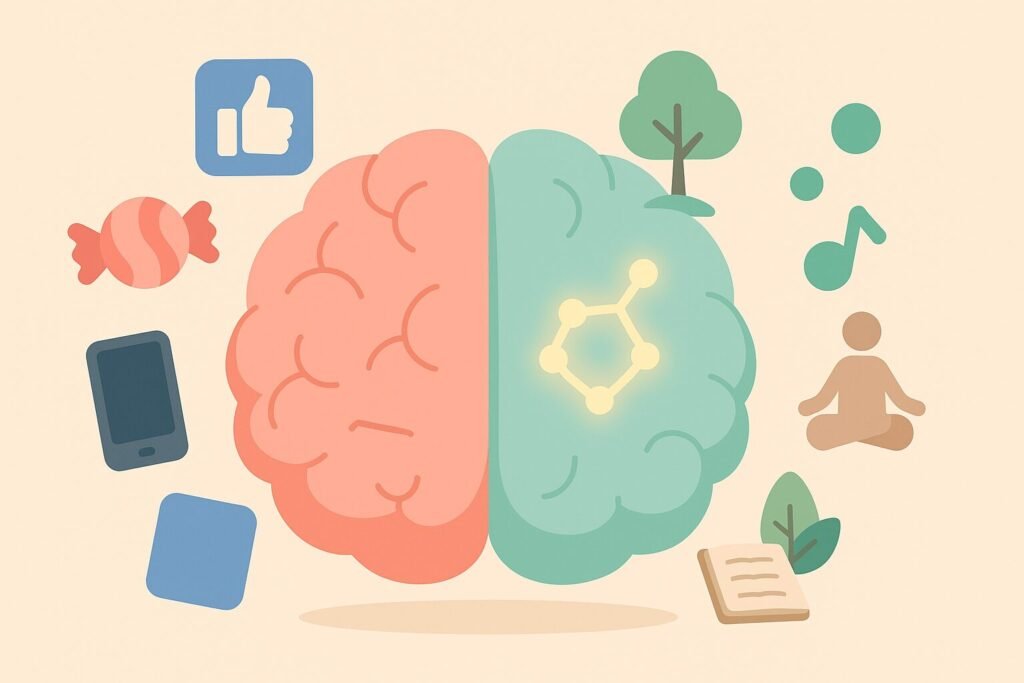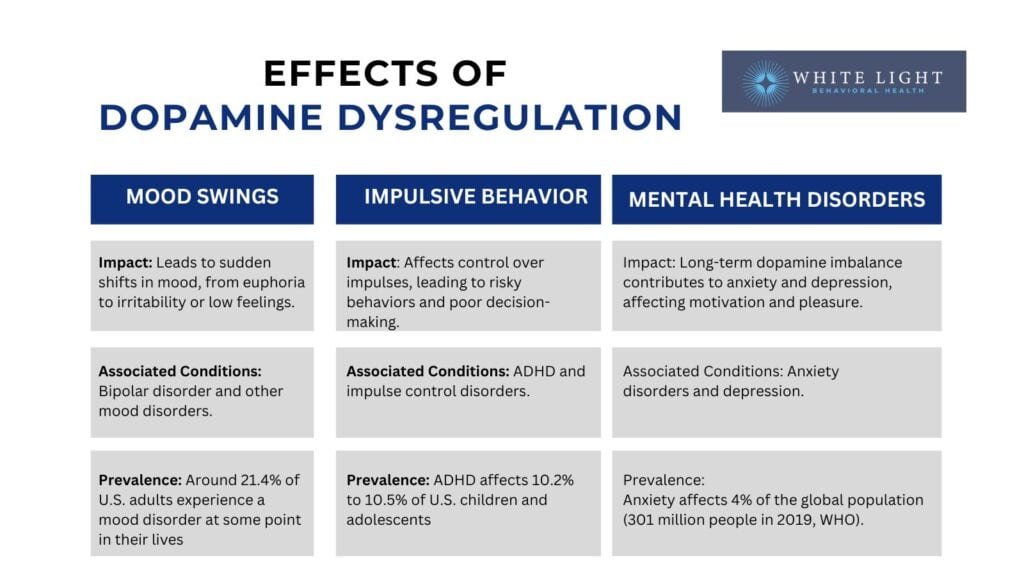
Dopamine detox has exploded in popularity as a supposed shortcut to resetting the brain’s reward system. Promoted by influencers and wellness experts, the practice promises clarity and control. But according to neuroscientists, this trend oversimplifies one of the brain’s most complex systems, and misleads the public about how dopamine actually works.
Table of Contents
What Is Dopamine and What Does It Really Do?
Dopamine is often labeled as the “pleasure chemical,” but that’s only half the story. It’s actually the neurotransmitter responsible for motivation more than pleasure , it drives us to pursue rewards, but it doesn’t necessarily deliver the emotional satisfaction when we get them.
Key distinction:
- Dopamine = wanting
- Endorphins, serotonin, and opioids = liking
Research on animals shows that even when dopamine is blocked, rats still enjoy treats , they just stop going out of their way to find them. In other words, dopamine gets you off the couch, not necessarily smiling while you eat the cookie.
Where the Dopamine Detox Trend Goes Wrong
The detox movement assumes that modern habits (scrolling, gaming, caffeine, etc.) overload the brain with dopamine to the point of depletion. So to restore balance, you must cut off all pleasure stimuli for a period of time. Some even suggest going full monk mode: no tech, no talking, no food you enjoy.
The reality? This concept misunderstands how dopamine works:
- You can’t truly “detox” from dopamine , it’s essential for movement, sleep, and survival.
- Daily pleasures like social media or coffee don’t cause the same neurological downregulation that opioids or nicotine do.
- Avoiding dopamine-rich activities won’t make your brain more sensitive to joy , at least, not in any proven scientific way.
That doesn’t mean the practice is completely useless. But it needs to be reframed.
Why Dopamine Dysregulation Does Matter (In Some Contexts)

There is a grain of truth in the idea that certain behaviors can hijack the brain’s reward system , especially in cases of:
- Addiction (substance-related): e.g., nicotine, cannabis, opioids
- Compulsive behaviors: e.g., binge eating, gambling
These scenarios can change dopamine signaling in the brain, making it harder to experience pleasure in natural ways. For example, chronic smokers may suffer from anhedonia (inability to feel pleasure), especially during nicotine withdrawal.
So yes, dopamine imbalances can cause real distress , but that doesn’t mean your Instagram habit is chemically damaging your motivation circuit.
What Actually Helps: The Case for Intentional Behavior Change
Let’s shift from detox myths to actionable truth. If your digital or dietary habits feel compulsive, there are better frameworks than pseudo-scientific dopamine cleanses:
1. Understand Habit Loops
According to behavior science, habits are built through cue → behavior → reward loops. If you want to break a habit (e.g., mindless scrolling), identify the cue (boredom, phone sight) and interrupt the cycle.
2. Use Friction Strategically
Rather than removing pleasure from your life, make unwanted behaviors harder:
- Move apps off your home screen
- Use site blockers like Freedom or Cold Turkey
- Keep your phone in another room while working
3. Replace, Don’t Just Remove
Swapping habits works better than quitting cold turkey:
- Instead of scrolling TikTok, walk outside or stretch
- Replace junk food with a high-protein snack
4. Create Boundaries, Not Bans
Total abstinence might trigger a rebound effect. Instead, reduce your engagement by 50% and track how you feel. Experiment like a scientist.
5. Track Triggers & Progress
Keep a short log:
- When do cravings happen?
- How do you feel before and after?
- Is it getting easier over time?
This reflection helps build self-awareness, which drives sustainable behavior change.
The Real Goal: Redesigning Your Reward System, Intentionally
Rather than fearing dopamine, work with it.
Here are brain-friendly ways to reset your reward baseline without going ascetic:
- Schedule low-dopamine breaks (walks, journaling, silence)
- Layer high-reward tasks with intention (use music, coffee as ritual not reaction)
- Practice novelty rotation: don’t binge the same show/game endlessly
- Anchor your day in analog wins: handwritten notes, real books, sunlight
These subtle shifts help recalibrate your desire system without demonizing pleasure.
Final Thoughts: Don’t Detox, Design
Dopamine is not your enemy. It’s your brain’s call to adventure.
You don’t need to cancel all pleasure to rediscover meaning. You need to interrupt autopilot behaviors, understand your triggers, and build routines that offer both novelty and grounding.
The next time you hear someone say they’re going on a dopamine detox, smile. Then ask: “What are you really trying to feel more of?”
That’s where the clarity begins.





